► Light revisions for 992.2 Carrera
► 389bhp, 0-62mph in 3.9 seconds
► Rear seats now a no-cost option
Don’t want your rear-engined Stuttgart sports car to get any electrical help? You might be interested in the updated 992.2 Porsche 911 Carrera. It retains its 3.0-litre flat six, now with turbos lifted from the old GTS and a charge-cooler from the Turbo. Don’t get too excited – power is up nine whole horsepower, and torque is exactly the same, albeit available from 50rpm lower.
As before, the power is delivered to the rear tyres only via an eight-speed PDK gearbox. If you want a manual, you’ll need to wait a bit longer (and dig a little deeper) for the Carrera T. The regular Carrera is the only 911 to dip below £100,000 if only by the slimmest of margins. Opt for headrests embossed with the Porsche logo and you’ll sneak into six-figures by six whole pounds.
Time for a trip to Porsche GB in Reading for a few hours behind the wheel on a wide selection of roads. If you’re curious about how we test cars here at CAR, we’ve got a page dedicated to explaining our processes.
At a glance
Pros: Plenty quick enough, still drives like a 911, much improved kit list
Cons: The sub-£100k 911 is effectively dead, PDK only
What’s new?
On top of the engine changes I’ve already outlined, the brakes grow in size and there are new adaptive dampers. You’ll find the faux key that started the 992 has been replaced by a discreet button – nothing flashing or red here – and the analogue central rev counter has met the bin. In its place is a 12.6-inch curved display with a variety of layouts available.
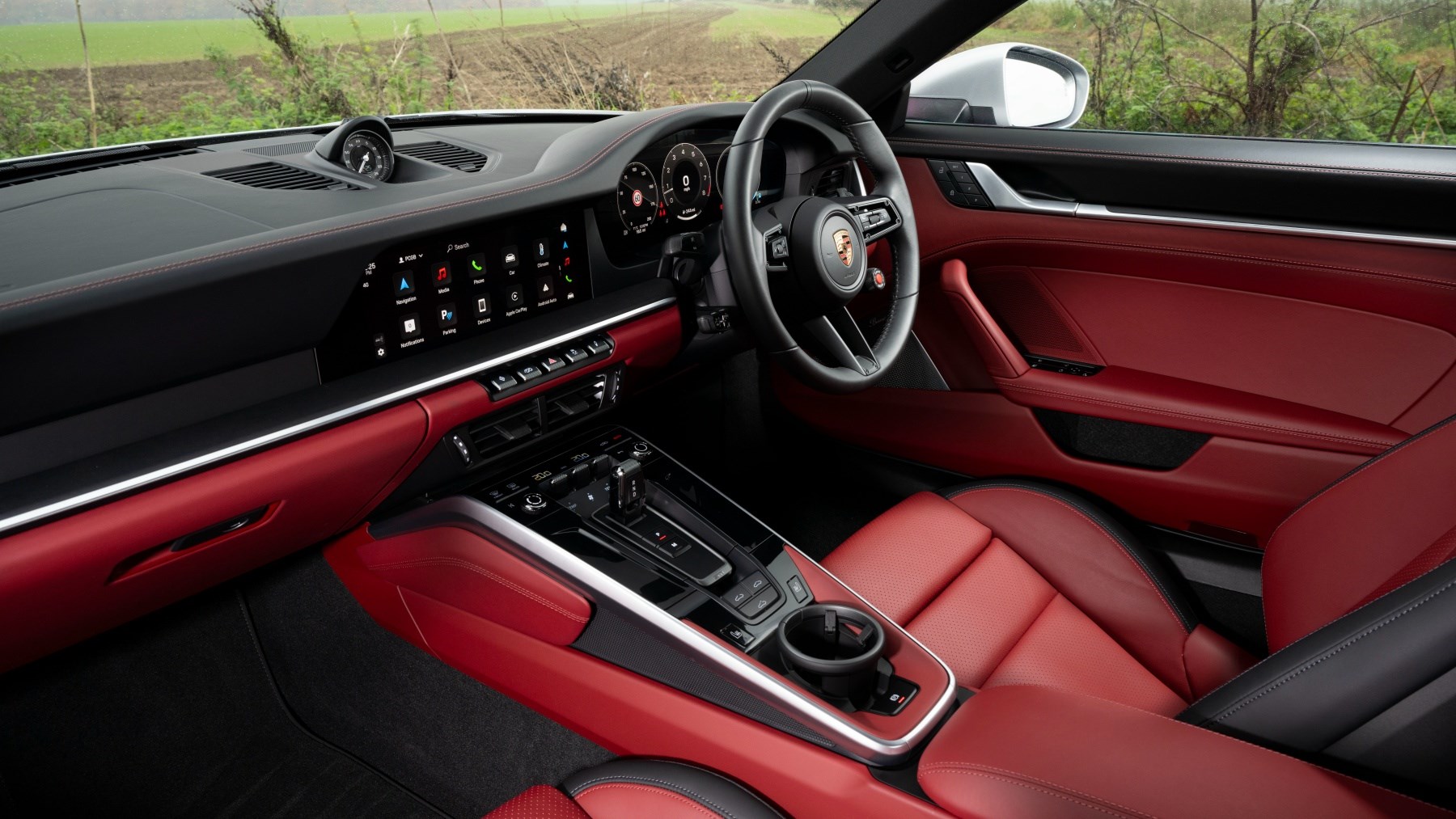
You get more equipment as standard which does explain some of the price hike. Adaptive LED headlights, lane keep assist, traffic sign recognition, brake assist, parking sensors and a rear-view camera should help protect you, and heated front seats and steering wheel are most welcome during a UK winter. The new front bumper retains the horizontally split front intakes rather than the vertical ones of the hybrid GTS, there’s a new back bumper and new wheel choices including Taycan-style aero
The handy mode dial on the steering wheel is now fitted to all 911s instead of just coming with the Sports Chrono pack. You’ll still need that for launch control and the Sports Response button that primes the engine and gearbox for maximum acceleration, though.
What are the specs?
The 2981cc flat-six breathes through a pair of turbochargers and produces 389bhp and 332Ib ft of torque. A car fitted with launch control will go from 0-62mph in a mere 3.9-seconds according to Porsche, and we know its figures are generally on the conservative side. Flat out it’ll do 183mph.
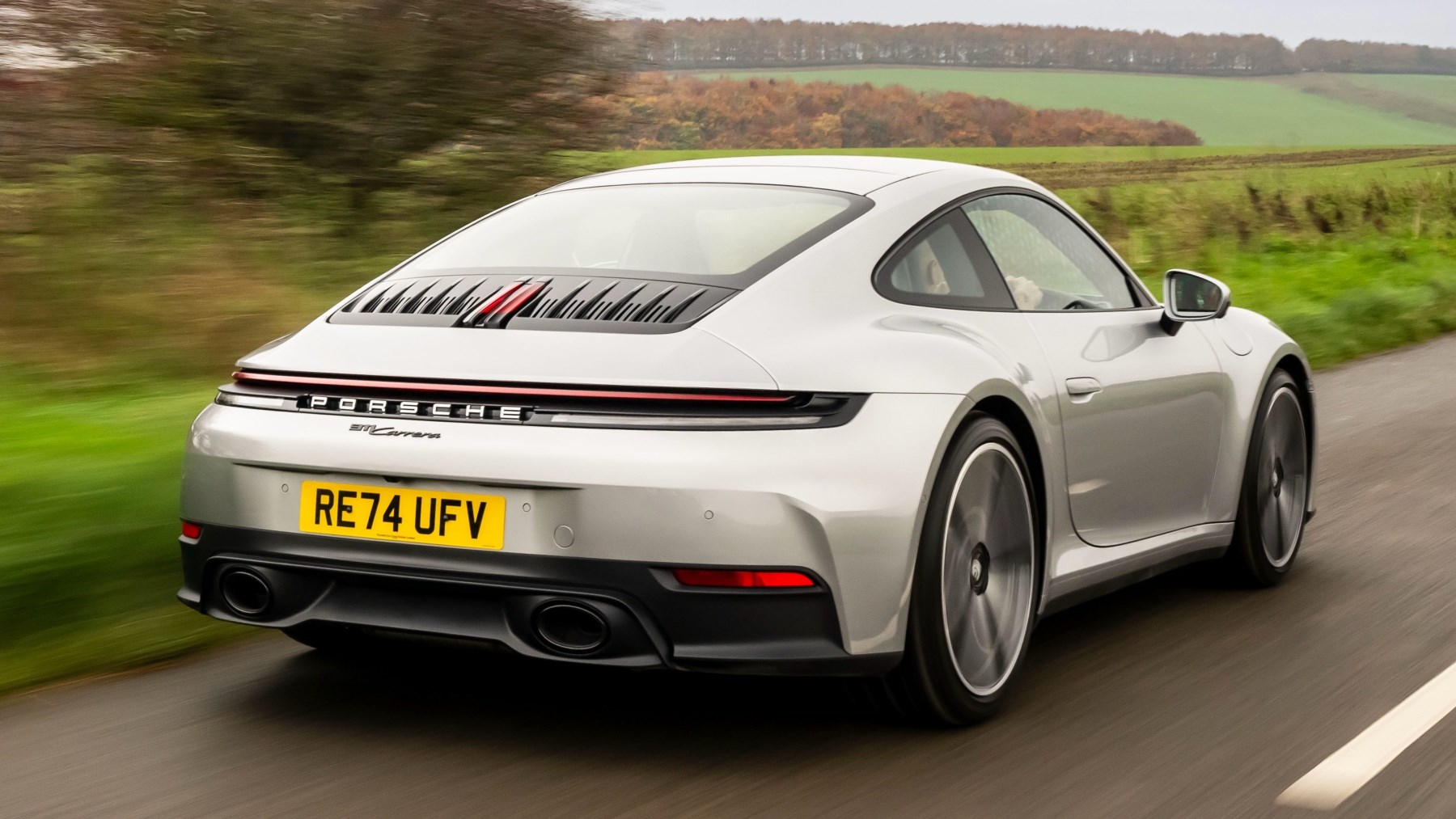
Weight is 1520kg, a figure that could almost be considered light in this day and age, although it seemingly doesn’t help efficiency a huge amount. According to the WLTP figures, it’ll do a best of 28mpg on the combined cycle while emitting 230g/km if you avoid touching the options list. Don’t be surprised If you manage over 30mpg on a motorway run, or teens if you’re enjoying yourself.
How does it drive?
This press car unsurprisingly has the Sports Chrono pack, and very effective its launch control is too. It hooks up staggeringly well from a standstill on cold tarmac despite the clutch being dumped at a highly optimistic number of revs – how very 911. Even after driving down in an 800bhp AMG SL, it does not feel remotely slow or like you really need any more poke.
It’s a great engine to interact with. There’s plenty of muscularity low down for dull driving duties, yet it’s an engine that still feels at its happiest being hammered to the red line, delivering a delightful flat-six howl in the process. Manual control of the PDK ‘box is a button press away should you want to fully conduct the orchestra behind you via the steering wheel mounted paddles.
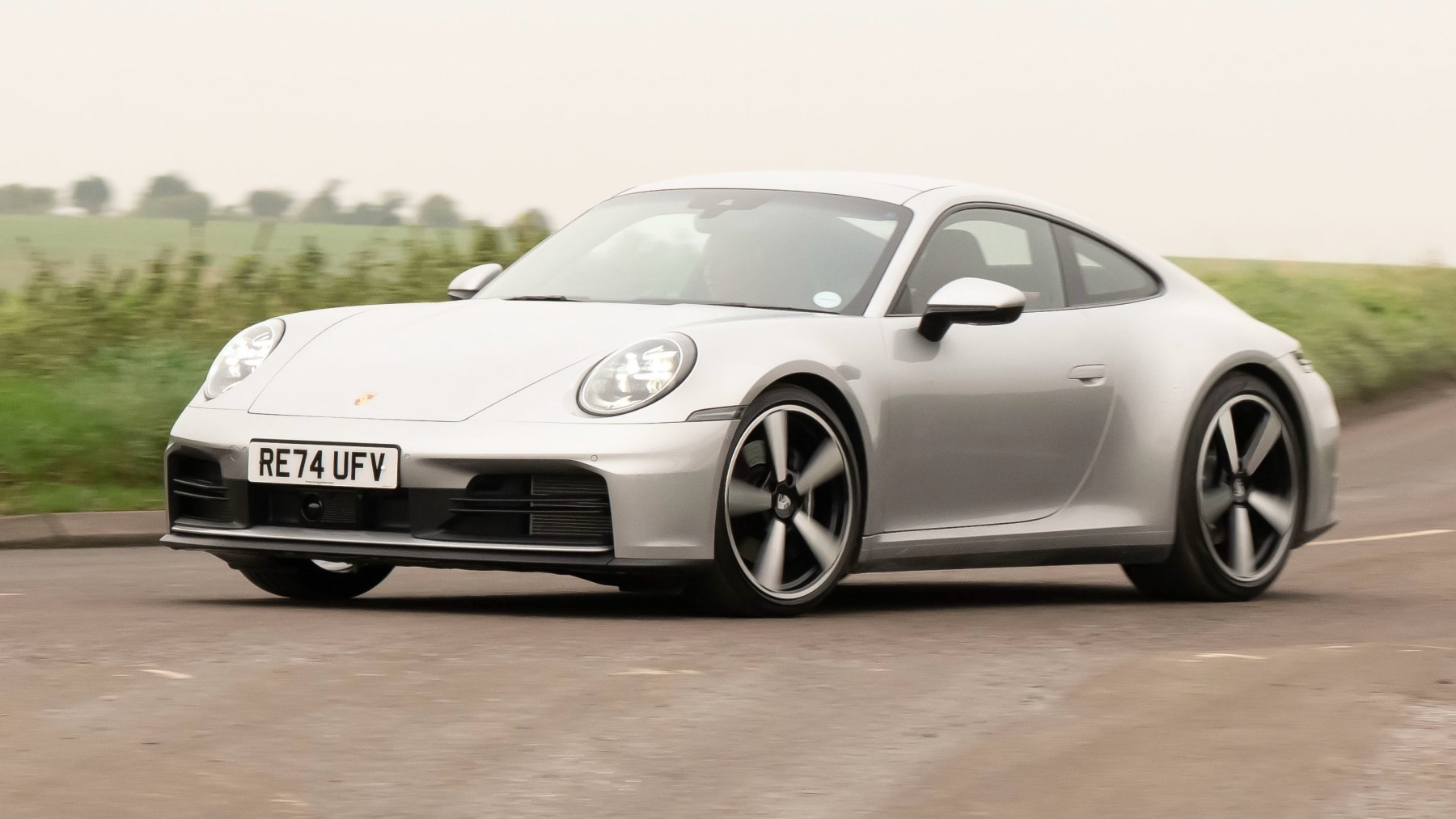
The heavy rear weight bias gives fantastic traction out of tight bends and an occasional sense of lightness over the front axle. Talkative steering lets you know what’s going on up front, helping you use the balance to your advantage. Oversteer is still most definitely an entertaining option.
I was perhaps expecting a little more compliance to the suspension given the new dampers. It’s not uncomfortable as such, and the optional inch bigger wheels won’t have helped, just a bit more sudden at times than I recalled from the old car. The upshot is tight body control, especially in Sport Plus, and flat cornering. Firm and feelsome brakes only add to your confidence levels.
Everything feels very familiar and very 911, although I do sometimes wish the Carrera came with a narrower body than its spicier siblings. If you also like a B road, you’ll probably feel the same on occasion.
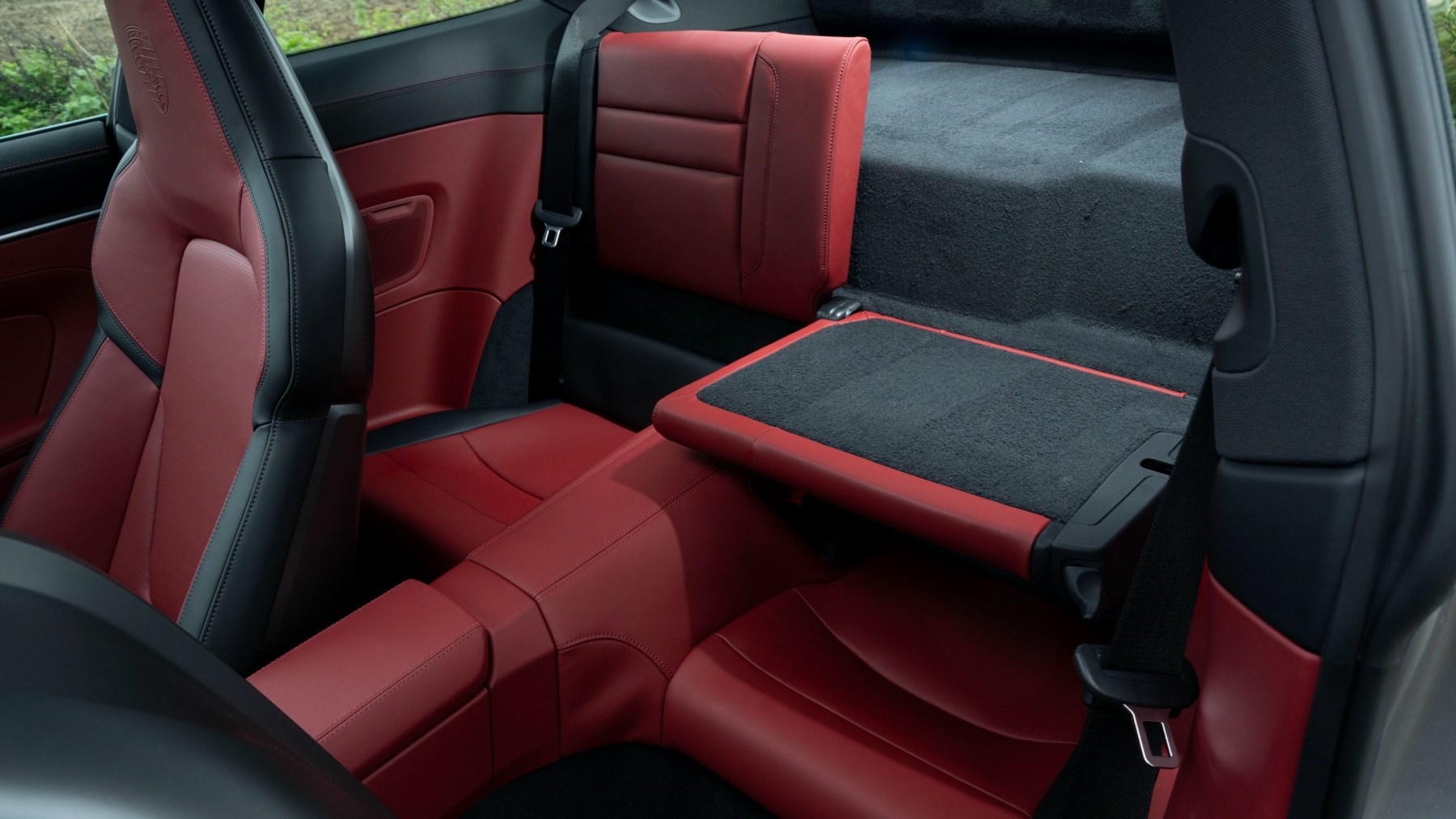
What’s it like inside?
911s no longer come as standard with rear seats, presumably to save a few quid and shave off a few kilos. Surprisingly, Porsche doesn’t charge to install them if you want the additional practicality. As ever, they’re best suited to children, shorter adults or people you don’t like. Front space is plentiful for a sports car with loads of adjustment for the seats and steering wheel so you can find your perfect driving position.
You’ll find a good mix of physical controls for stuff like the drive modes and heating, with crisp and responsive screens. The new driver’s display’s graphics are sharp, and information presented clearly, while purists will appreciate the option of a central rev counter with the redline at 12 o’clock.
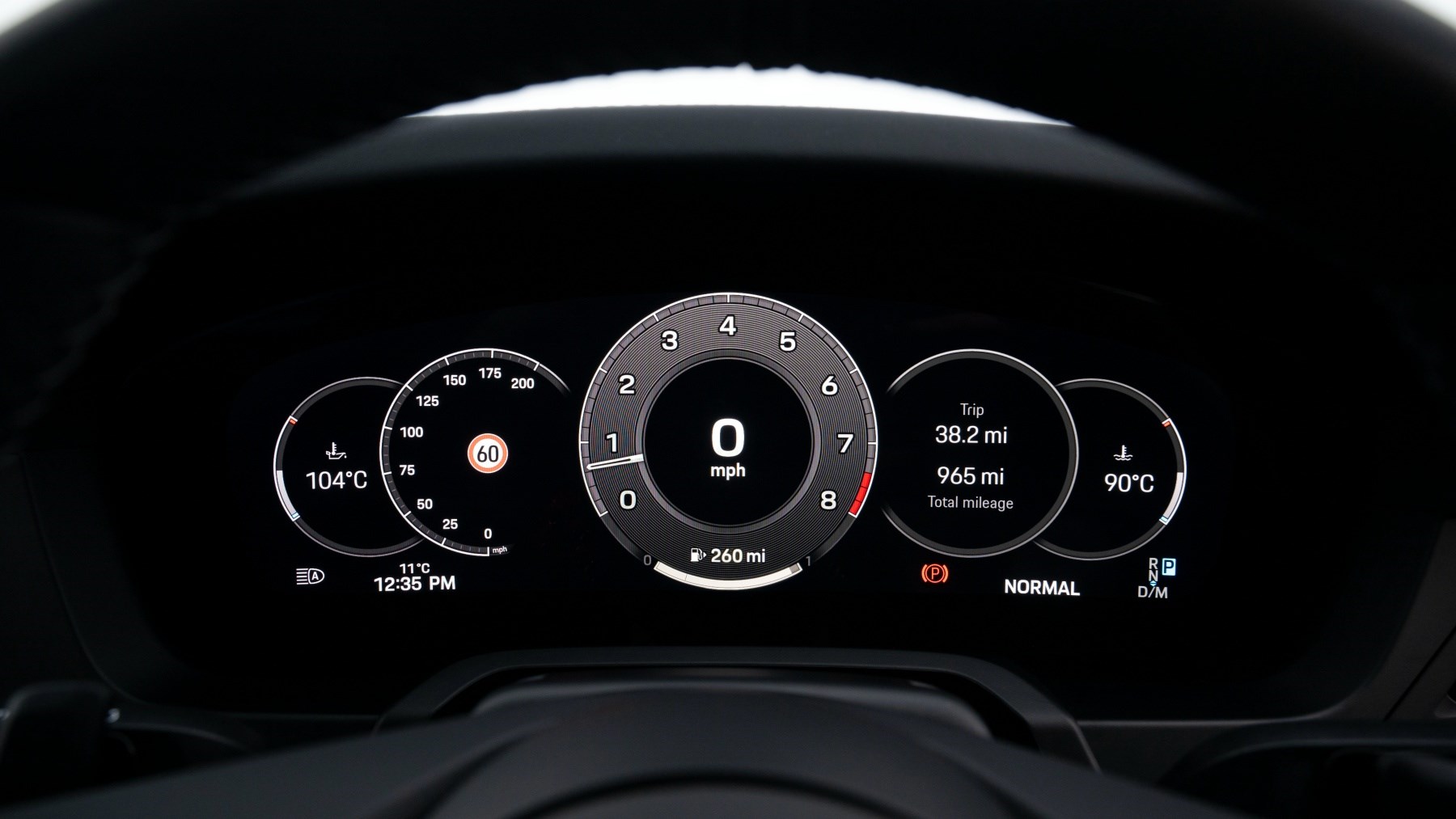
It’s controlled by the mercifully touchpad-free steering wheel, the spokes retaining proper buttons and scroll wheels. The cruise control stalk is also retained and has a button that easily disables the lane keep assist. Most welcome.
Before you buy
The Carrera is the entry point to the 911 range, so if you want four-wheel drive, more power or a manual ‘box, you’ll need to look higher up the ladder. You’ll no doubt want to add a few options from Porsche’s long list, but it’s possible to spend tens of thousands and create something truly hideous if you’re not careful.
Verdict
The switch from 992 to 992.2 is a subtle evolution for the Carrera, and there’s certainly very little to get up in arms about. We’re so used to digital displays now that losing the rev counter doesn’t feel like any loss, and a button is preferable to the old starter nubbin.
You could argue it’s a purge of the analogue to fully ready us for a fully electric 911, no doubt with a few batteries slung behind the back axle for old time’s sake, but really, it’s a canny refresh to keep it ahead of newer rivals who aren’t so tied to the past.
Is this all the 911 you could ever need? There is an argument for it given the combination of pace, involvement and usability. However, if you’ve experienced the quality of a Porsche manual shift, pace of a GTS, or the shriek of a GT3 motor, I can certainly see why you’d spend the extra.